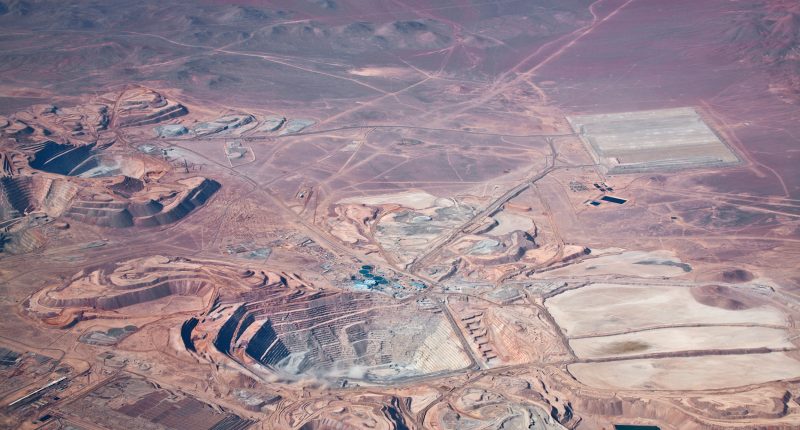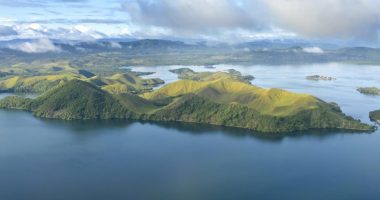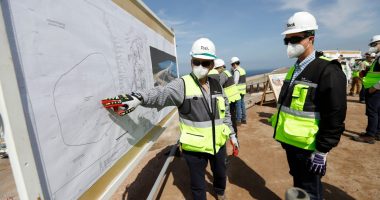- Atacama Copper (ACOP) receives initial exploration results at the Placeton Project in Chile
- Completion of surface geological and structural mapping, geochemistry survey, magnetics and near completion of geophysics covering all four target areas
- Results identified two high-priority porphyry targets in Placeton Central-North and Caballo Muerto based on multiple occurrences of D-veins, phyllic alteration and leach capping
- A follow-up geophysical IP program is planned for April 2022 with a focused strategy in better defining the sulphide-related anomalies along and below high-priority target
- Atacama Copper Corporation (ACOP) is up 6.90 per cent at C$0.31 at 11:39 am ET
Atacama Copper Corporation (ACOP) has received results from the initial phase of exploration at its Placeton and Caballo Muerto projects in Chile.
Gino Zandonai, CEO of Atacama Copper said, “We are excited to have nearly completed the first phase of the exploration program on the Placeton project.”
“The results have reinforced our conviction that the Placeton tenement package contains at least four porphyry targets, of which two have, to date, been designated as high-priority. We look forward to progressing the follow-up geophysical survey in April […],” added Zandonai.
The identified intrusives are composed of a rhyodacite dome, monzonitic porphyry, and monzonite-granodioritic bodies.
The alteration is silicification and phyllic (sericite, quartz) argillic (illite, montmorillonite, kaolinite) with developments of sub-propylitic halos (epidote chlorite, magnetite) and local tourmaline.
A leach capping with hematite and goethite, including pitch limonite and copper oxides (atacamite-chrysocolla) is developed in veins, disseminated, and breccia matrix. D-veins and local evidence of A-veins were identified.
These elements, when combined, provide strong evidence of the presence of an altered porphyry copper system. Additionally, a new phyllic altered porphyry dome outcrop area, south-east of Placeton South, has been identified with the potential to add volume to the current target zone.
The geochemical anomalies exhibit a high correlation with the altered-mineralized centers, supporting the metal input location.
In the case of copper, the most significant geochemical anomalies were found in the Monzodioritic Porphyry unit, and from the rhyodacitic dome the most significant molybdenum geochemical anomalies come mainly from intrusive facies of the Eocene Complex.
Values from 22 to 28 ppm of Mo, are related to copper oxide mineralization at the central porphyry and nearby structures at the volcano-sedimentary bedrock.
The magnetic susceptibility modelling process shows a notable magnetic anomaly in the Central Placeton area which is extending into Placeton North.
The central part of the anomaly coincides partially with the phyllic- altered monzodioritic porphyry unit.
The presence of a monzodioritic porphyry mapped at the surface and the high magnetic anomaly slightly displaced to the east, suggest a porphyry-related magnetic alteration zone in Placeton Central (extended to the north).
The historical geophysics at Placeton South shows a strong chargeability anomaly 300m below the surface coincident with the felsic body. The strong chargeability anomaly continues from 300m to approximately 600m below the surface.
The work program to date has identified two high-priority targets with critical prospective attributes required in a mineralized porphyry system.
However, the district is known to locally host sub-economic porphyries and domes emplaced in the late stages of the porphyry deposits, which could disguise or mask economic mineralization in an early stage of drilling.
This was the case at the neighbouring Relincho Deposit, where initial drilling faced part of the low-sulphide, low-mineralized units before, ultimately, the discovery of the complete mineralized porphyry system.
Consequently, it is considered necessary to define the presence and relative distribution of sulphides of each target through a follow-up IP geophysics survey.
The survey will cover between 10 to 20km in length on the two-high priority targets focused on the leach cap zones and covering the magnetic anomalies.
This will provide an excellent tool for targeted drilling to test for the presence of the expected hypogene and supergene mineralization.
Atacama Copper plans to complete the follow-up IP program in April 2022, followed immediately by drilling of the identified targets.
Atacama Copper Corporation is a resource company focusing on the acquisition, exploration, and development of copper properties in Chile.
Atacama Copper Corporation (ACOP) is up 6.90 per cent at C$0.31 at 11:39 am ET.






